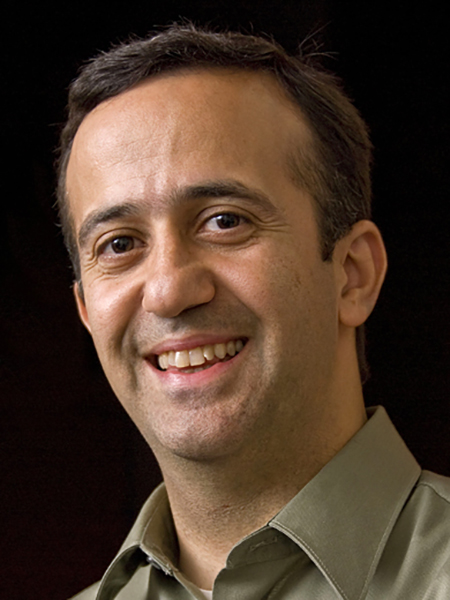Advancing Agricultural Technology with Artificial Intelligence

Researchers developing lower-cost commercial sensors to monitor soil conditions
A multi-disciplinary effort between the Lyles School of Civil Engineering and Purdue’s Elmore Family School of Electrical and Computer Engineering is working toward developing low-cost, reliable soil sensors that could reduce their price from several hundred dollars to just a few cents each. This effort is through Scalable Manufacturing of Aware & Responsive Thin (SMART) Films Consortium that aims at making Internet of Things (IoT) sensor technology so affordable that it can be produced in bulk and deployed over large areas.
Through the use of 3D-printing technology, Purdue researchers are developing a soil sensor that can be quickly and inexpensively produced. These small devices can be used to test the nitrate levels in soil — a vital piece of information for both farmers and environmental researchers.
“Once you identify the nitrate levels, you can adjust the setting of fertilizers,” said Mohammad Jahanshahi, associate professor of civil engineering. “For both farmers and environmental engineers, these sensors are necessary for their work — but they’re fairly expensive, currently.”
The sensors measure the difference of the potential voltage between the sensor electrode and the reference electrode, and this voltage reading is converted into the concentration of the nitrates.

“Similar printed electrochemical sensors can be used to measure nutrients, pesticides, bacteria or viruses. Applications are in digital health (wearable devices), food safety/freshness and environmental monitoring,” said Ali Shakouri, professor of electrical and computer engineering and the Mary Jo and Robert L. Kirk Director of the Birck Nanotechnology Center.
Jahanshahi said commercial soil sensors typically cost around $800. However, Purdue uses roll-to-roll printing and coating machines, which can produce sensors for as little as 10 cents.
“Depending on what you wanted these sensors to test, they can likely be programmed to do so,” Jahanshahi said. “Anywhere from other quantities, such as nutrient levels, to possible soil and water contamination.”
While the Elmore Family School of Electrical and Computer Engineering further develops its uses, Jahanshahi’s team is working on testing the sensors themselves to improve their reliability. He and postdoctoral researcher Rih-Teng Wu are developing AI-based approaches for efficient and reliable quality control of low-cost sensors during the manufacturing process.
The process involves building an AI model through pictures taken of the sensors. The program can then reliably predict a future sensor’s quality by comparing its library of recorded information.
“Right now, the sensors have shown to be incredibly promising in what they can do. However, there is still some uncertainty in the robustness of the sensor — some fluctuations,” Wu said. “We want to reduce that uncertainty and make sure to improve the quality.”
Wu said testing both the sensors and the AI program will continue for several more months as both are still being developed and improved upon. New prototypes for both continue to be developed and refined.
Throughout 2021, Jahanshahi’s team will study sensor aging and aim to use sensor diversity and machine learning to correct for long-term drifts. Additionally, the team has installed sensors at commercial farms in the 10-county region around the University.
This project is funded by Lilly Endowment through the Wabash Heartland Innovation Network.
Source: Advancing Agricultural Technology with Artificial Intelligence
